 Armada Nacional de la República de Colombia – c250 vessels 1947-today
Armada Nacional de la República de Colombia – c250 vessels 1947-today
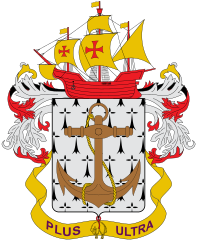 The Colombian Navy, “Armada Nacional de la República de Colombia” simplified as “Armada Nacional” as a naval branch of the military forces of Colombia today is tasked of security and defence on both the Atlantic (Caribbean) and Pacific oceans as well as an extensive network of rivers and a few small land areas under its jurisdiction. Today it had a strength of 35,000 personnel including c22,000 in the Marine Infantry corps, 9 frigates, 2 corvettes, a hundred OPVs, 4 submarines, a coast guard and more than 100 riverine vessels. It used not to be that plentiful.
The Colombian Navy, “Armada Nacional de la República de Colombia” simplified as “Armada Nacional” as a naval branch of the military forces of Colombia today is tasked of security and defence on both the Atlantic (Caribbean) and Pacific oceans as well as an extensive network of rivers and a few small land areas under its jurisdiction. Today it had a strength of 35,000 personnel including c22,000 in the Marine Infantry corps, 9 frigates, 2 corvettes, a hundred OPVs, 4 submarines, a coast guard and more than 100 riverine vessels. It used not to be that plentiful.
In 1902 the country had a single cruiser, and in 1903 faced the panama standoff with the USN and… three gunboats.
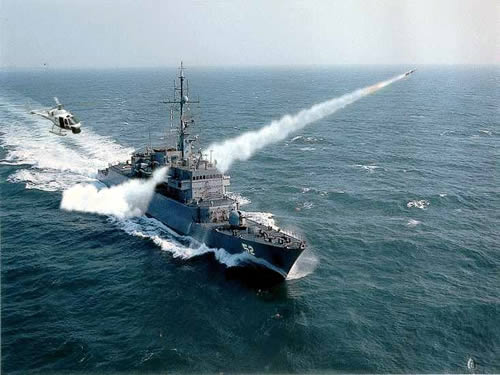
The Frigate Caldas
In the interwar, a few more small ships were acquired, but the navy reverted to a coastguard and river service until seeing a rapid expansion before the 1932-33 Peru-Colombia War, acquiring two ex-Portuguese destroyers and four modern riverine gunboats. Colombia remained neutral in WW2. In the cold war, there was a sizeable expansion however which is detailed there. Ship’s names are preceded by the acronym “ARC”, (for Armada de la República de Colombia) whereas it a common short name for the Navy itself. Full history:
Origins: WWI and WW2

The gunboat Bogota in 1898
Colombia got its independence from Spain as its Declaration of Independence was issued on 20 July 1810. The country is today proud of its first president in 1919, Venezuelan-born Simon Bolivar, a military and political leader which secured independence of Colombia, Venezuela, Ecuador, Peru, Panama, and Bolivia from the Spanish Empire. The country had its borders on two ocean, making its situation unique in the continent (outside central america), both the Pacific and Atlantic. Modern Colombia comes from one of the countries that emerged after the dissolution of “Gran Colombia”, the other two being Ecuador and Venezuela. It had the first constitutional government in South America, with Liberal and Conservative parties founded in 1848 and 1849 as the oldest political parties in the Americas and Slavery abolished in 1851.
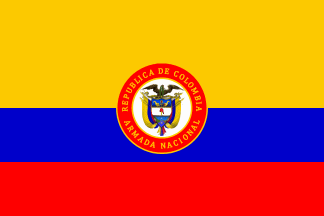 As for naval matters, they were not bright, however the country’s growing economic capabilities gradually enabled its gradual rise, from practically nothing, a bunch of requisitioned sailships and steamers, to a reasonably large force today. Prior to WWI, the country had only one “cruiser” and three gunboats, two of which were in the pacific.
As for naval matters, they were not bright, however the country’s growing economic capabilities gradually enabled its gradual rise, from practically nothing, a bunch of requisitioned sailships and steamers, to a reasonably large force today. Prior to WWI, the country had only one “cruiser” and three gunboats, two of which were in the pacific.
The 1902 Almirante Lezo was 1,200 tonnes Vickers second hand masted cruiser that could act as private yacht, the previous El Bashir purchased from Morocco. Later named Cartagena from 1912. With two 4.7 in guns, one 1-pounder, torpedo tubes and 15 knots, years of poor maintenance meant she was scrapped in 1925.
About the flag: As its formal motto “Plus Ultra” (further beyond) it was assimilated to the blue of the flag and became even an election slogan “Protegemos el azul de la bandera”, a popular catchphrase to the public. Earlier it was “Sailing our pride” (Navega nuestro orgullo).
During the Panama standoff, concerning the unfinished canal, the USN showed muscles as Colombia was found “uncooperative”, and try to force ownership of the isthmus by arms. USS Nashville faced its Colombian counterpart, Almirante Lezo, but the US superior artillery made her withdrawn. The other two, Bogota and Padilla in Panama City, Pacific, also exhange fire with US vessels. But they fared no chanced later against the the monitor USS Wyoming, cruisers USS Boston and Marblehead, gunboat Concord. The Navy was disgraced by the event and the same year was discarded the old “cruiser” General José Maria Córdoba (ex-Neptuno) purchased in 1896. The 1888 cruiser “21 de Noviembre” (ex-Almirante Padilla) purchased in 1902 played no part either. In addition were acquired two riverine steam stern wheelers (discarded 1935) the Steel river gunboat Hércules (sank 1928), steamer La Popa and the transport Cordova.
In 1913, the Colombian navy four 20 tons steam launches for its coast guard buy the country took no part in WWI, remaining neutral. Eventually the Panama canal issue was fixed between Colombia and the USA in the 1921 treaty.

The capable Destroyer Antioquia (1933)
In the interwar, were acquired in 1932 the Patrol gunboat Bogotá from Germany (1919), and Former German minesweeper M140, which ran aground and sunk off Manzanillo in 1936. There was also the Patrol gunboat Córdoba, a former 1920 German minesweeper, while M140 was sunk in gunnery exercises on 11 June 1937. The coast guard and state services used also steamers and Government river dredgers. The Navy was no more than a coastguard/riverine force (so brown-green navy) before a rapid expansion at the eve of the 1932-33 Peru-Colombia War: Two ex-Portuguese destroyers, four new riverine gunboats.
Apart the 1300t Douro and Tejo, still active in WW2 as the country remained neutral at first. In addition the Navy had the Steel river gunboat Presidente Mosquera (ex-Colombia, 1912), the Carabobo class Patrol gunboats (Fr built, 1925) three used as Coastguard/river patrol vessel as Junín (ex-Boyacá) and Pichincha and the Cartagena class river gunboats (Yarrow 1931), the Santa Marta and Barranquilla, Patrol gunboat Mariscal Sucre (Yarrow 1909, acquired 193, former yacht Flying Fox) used as TS from 6 December 1948.
In 1939, Colombian started a rapprochement with the US, notably due to its proximity to the Panama canal. Based on an agreement, US naval and military aviation missions arrived in Colombia in January 1939 and both dispolmatic corps started consultations on a joint defense of the Panama Canal if the need arose. US advisors asked notably for a campaign of aerial photography in order to established updated maps and control possible location for enemy submarines (it was late 1940 and the battle of the Atlantic has started).
However it was made clear that this task was to be made by the Colombian air force, and the defense of Colombia should be carried out by Colombians, meaning no US bases. But that implied a modernization of equipment, increase of personel, and in exchange, the country was able modernize its military via the Lend-Lease program. On March 17, 1942, an agreement was signed which granted $16.5 million in military assistance. Other funds went to development projects, roads, barrages, agricultural projects. The whole country modernized.
However, German U-boats sank four Colombian ships during the war, small sailing vessels: The schooner SS Resolute on June 23, 1942, by U-172 (by deck gunfire), the 110t SS Roamar off San Andres by U-505 on July 21, 1942 which gave Colombia the political grounds to declare war on Germany, and the sam also sank the 153-ton Urious, and then 39 tons SS Ruby on November 18, 1943 north of Colón, again, by deck gun by U-516. Each sinking was done without warning and from deck armament, willfully killing all the crew.
The only engagement was against U-154, in the Caribbean Sea, when the destroyer ARC Caldas spotted U-154’s persicope glinting in the dark on March 29, 1944, at 20:25 on her portside. The fell on the boat surfaced, the latter surprised by her sudden appearance, so unable to man their deck and rushed to to dive, the tlatter reporting two 105-mm hits before, followed by a passe of depth charges and stopping when spootting an oil slick and wreckage, registering a kill. But it was a ruse, and U-154 escaped. Nevertheless, this was a victory in the newspapers.
The Colombian Navy in the cold war
WW2 Legacy vessels
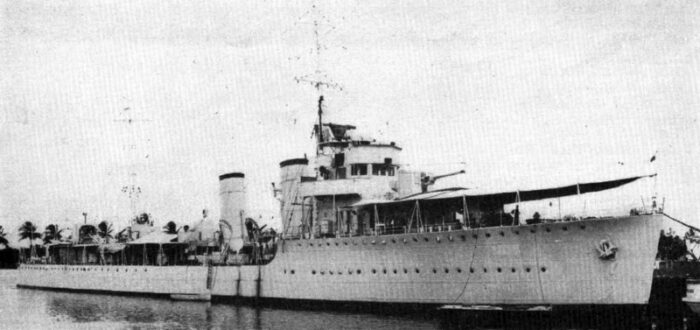
The Colombian destroyer Caldas in 1947
The Colombian Navy still operated in 1947 the following:
-2 Antiquoia class (ex Vouga) destroyers (1933):
Douro and Tejo were based Brit. Ambuscade class DDs, renamed Antioquia and Caldas as Yarrow destroyer design built under licence at Estaleiro Real de Lisboa, purchased on the stocks as Peru acquired Novik class destroyers from Estonia. They were upgraded in 1952 and 1955: 2x 127mm/38 Mk 30 guns, 6x 40mm/60 Bofors Mk 3, 24-barrel (178 rockets) ASWRL Hedgehog Mk 11, 4x DCTs, modern radar and sonar. Both discarded in 1961.
-Steel river gunboat Presidente Mosquera (1912) still active as a schoolship for mechanics and boys in 1955, sunk 28 November 1957.
–Carabobo (1925): Carabobo, Junín (ex-Boyacá), Pichincha river patrol vessel, discarded 1950.
–Cartagena, Santa Marta, Barranquilla; riverine gunboats, stricken 1963, 69 and 85.
–Mariscal Sucre (1933): Patrol gunboat, naval school from 6 December 1948, stricken 1955.
Colombia has traditionally possessed one of the smallest navies in South America. The nation’s river flotilla is as important as the deep water fleet. The short service time of many units suggests the Navy is experiencing maintenance problems. There are 7200 officers and men serving with the Colombian Navy and Colombia also has 6800 marines. National service is for a period of two years. The country’s main naval base is at Cartagena which also has a naval training school. Balanguero, Barranquilla, Santa Marta and Buenaventura, also naval bases, are less important.
With all the older destroyers retired, the biggest and most powerful Colombian surface warships are the four frigates of the FS 1500 type built in Germany. These handy, helicopter-capable ships are to be better armed (SAM, CIWS, possible even SSM) if the funds become available. Colombia also expressed interest in two 600t missile corvettes built for Iraq in Italy and it was planned to acquire these ships in 1994—95, budget permitting.
Organization
The Navy is part of the executive branch of the Colombian Government, the President of Colombia being the commander-in-chief of all military forces, via the civilian Minister of Defense, and the General Commander of Military Forces (Spanish: Comandante General Fuerzas Militares), who is a senior officer appointed by the president from any of the 3 services (Army, Aerospace Force or Navy). The most senior officer organic to the Navy is the Commander of the Navy (Spanish: Comandante de la Armada Nacional).
Forces and Commands
The Colombian Navy operates with 8 specialized forces or commands across the territory:
- Marine Infantry Command: Land, amphibious and riverine operations across all territory.
- Naval Force of the Pacific: Surface and submarine defense and patrol of the Colombian Pacific sea.
- Naval Force of the Caribbean: Surface and submarine defense and patrol of the Colombian Caribbean sea.
- Naval Force of the South: Riverine operations across the Southern and Southeastern areas of the country.
- Naval Force of the East
- Comando de Guardacostas: Maritime security, control, monitoring and interdiction in both Caribbean and Pacific seas.
- Navy Aviation Command: Naval air support, surveillance, transport and logistics and Search and Rescue.
- San Andres y Providencia Cd: Surface and submarine defense and patrol of the Colombian Caribbean sea around the San Andres Archipelago.
Naval educational institutions
Along with the 7 operational commands above, the Colombian Navy maintains 3 major training schools for its personnel:
- Naval Academy: Escuela Naval de Cadetes “Almirante Padilla”
- Navy NCO School: Escuela Naval de Suboficiales ARC Barranquilla
- Marine Infantry Basic School: Escuela de Formación Infantería de Marina
The Navy also has 12 other post graduate schools aimed at sharpening and intensifying the needed capacities and personnel of the various naval services and the Marine Corps.
Operating Bases
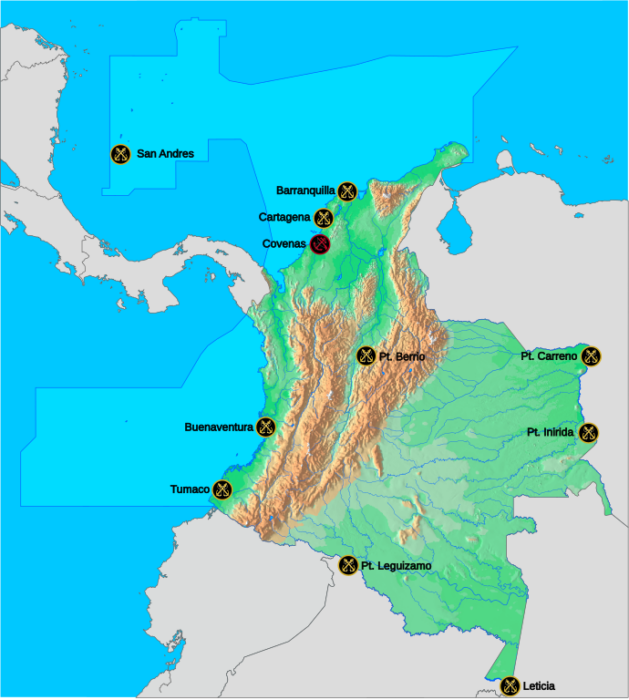
Major naval bases of the Colombian Navy:
Navy: Naval, Riverine and Primary Operating bases
Marine Infantry: Primary base and training school
The ARC’s major bases on the Caribbean and Pacific littorals are seconded by many operational riverine bases across the territory.
Mail naval bases are:
- Bolívar (BN-1), near Cartagena
- Bahía Málaga (BN-2), near Buenaventura
- Leguízamo (BN-3), near Puerto Leguízamo
- San Andrés (BN-4), at San Andrés
- Puerto Carreño (BN-5), near Puerto Carreño
The more important riverine bases are:
- Riverine and Coast Guard Tumaco
- Riverine and Marine Infantry Post Leticia
- Riverine and Marine Infantry Post Berrío
- Riverine and Marine Infantry Post Puerto Carreño
- Riverine and Marine Infantry Post Puerto Inírida
The Colombian Navy planned once to established a naval base in Antarctica called “Almirante Padilla Summer Scientific Station”. It is still at the site selection stage.
Missions and Interventions of the Colombian Navy
In the past, the Combian Navy took part in the Battle of Lake Maracaibo and Thousand Days War (Civil war) linked to the independence, the 1932-33 Colombia-Peru War in which took part 7 gunboats
and 3 transport ships. World War II (by patrolling its own waters and hunting down U-Boats), see above for details, the Korean War (yes, with the Colombian Battalion), several internal Colombian Armed Conflict and Operation Atalanta (counter-piracy efforts off the Horn of Africa) recently.
The Colombian Navy in Korea
In the Korean war, ARC Almirante Padilla took part in 7th fleet operations, TF 95, assigned to escort groups GT95.5 and Blockade GT95.2, coastal bombardment at Wonsan, patrolling Seongjin, Cho-Do and Seok-Do until January 19, 1952, replaced by ARC Capitán Tono (CC Hernando Berón Victoria) off Wonsan and Seongjin, but also submarine patrol off Sasebo until November 12, 1952, relieved by ARC Almirante Brión (CC Carlos Prieto Silva) by June 1953 until May 17, 1954. All three formerly served in the region already in the Soviet Navy under Lend-Lease (Project Hula) returned in 1949, used by the USN in Korea in 1950, transferred via MDAP to Colombian cews that arrived in Japan in between. So the frigates’s acceptance coincided with the Korean war. Rotations went on until October 1955.
Colombian Missions today
The primary missions of the Colombian Navy were defined as such:
Contribute with the defense of the Nation through the effective use of flexible naval power in the maritime, river and land spaces under its responsibility, in order to fulfill the constitutional role and participate in the development of sea power and the protection of the interests of Colombians.
Objectives were defined as follows:
Protection of the population and resources, consolidation of territorial control*.
Neutralization of illegal drug trafficking.
Strategic deterrence**.
Maritime and riverine safety***.
*That implies the Colombian EEZ on both the Atlantic and Pacific side.
**Of course only via the use of anti-ship missiles.
***That implied police work thoughout the riverine network inside the country, notyably stopping all sorts of illegal smuggling and trafficking (like natural resources pillage, precious wood, animals, gold…). The Colombian forest is indeed precious, a primary forst over 52% of its land mass, and there are also mangroves covering an estimated 408,000 hectares, more than 75% on the Pacific coast.
One point for the future which is odd, is that the geographical configuration of the country, at the north bow of the continent, offers some of the world’s most impressive offshore wind resources across the world with favourable depth for installing these. The potential is estimated at 109 GW. If financed, they would obliged the Navy to defend these fields in addition to its usual tasks.
Less known, there is also a legal department in the Navy called to ensure integral use of the sea by Colombia. It is an in-between military and diplomatic role, on one side with implementation and enforcement of law and order with phylical means, and on the other side, battling legal claims on its own territorial waters by other nations, as recalled by the recent case of a dispute with Venezuela over the continental shelf extension.
During Operation Atalanta, the Colombian Navy sent on 27 July 2015, ARC 7 de Agosto from Cartagena de Indias to Operation Ocean Shield inspecting over 400 watercraft near the coast of Somalia. This was the occasion of naval exercises with other navies such as Hyanë and Erfurt (Bundesmarine) Galicia, Victoria, Meteoro (Spanish Armada), JS Akizuki (JMSDF) HDMS Absalon (RDN), and trained with the Seychelles Coast Guard and Maritime Police when stopping there for R&R.
The Colombian Navy Today: Assets
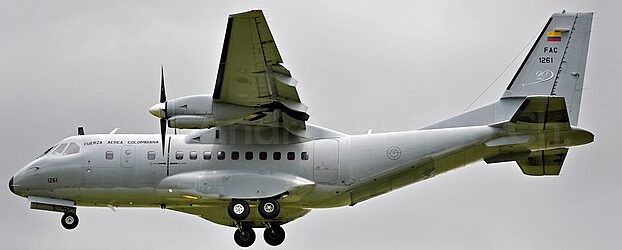
Casa CN 235 used by the air force and the Navy.
Colombian Naval Air force
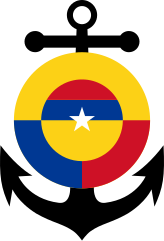 In 1942, separation between the air force and army was done, following modernization agreements with the US. The Fuerza Aérea Colombiana (Colombian Airforce) was established officially in December 1944. By default, it’s the Air Force that performed naval reconnaissance missions. This started in 1943 when Colombian was at war, and concentrated over the Carribean. There was no changes even after the Korean war, but in the 1980s with the adoption of new helicopter-capable frigates, this changed. To man,age this park of helicopters MBB BO-105, the naval air branch was created, still part of the air force through, and with common assets. The Navy Aviation Command operates today 17 fixed and rotary wing aircraft for its patrolling/SAR missions as well as logistical support of naval facilities:
In 1942, separation between the air force and army was done, following modernization agreements with the US. The Fuerza Aérea Colombiana (Colombian Airforce) was established officially in December 1944. By default, it’s the Air Force that performed naval reconnaissance missions. This started in 1943 when Colombian was at war, and concentrated over the Carribean. There was no changes even after the Korean war, but in the 1980s with the adoption of new helicopter-capable frigates, this changed. To man,age this park of helicopters MBB BO-105, the naval air branch was created, still part of the air force through, and with common assets. The Navy Aviation Command operates today 17 fixed and rotary wing aircraft for its patrolling/SAR missions as well as logistical support of naval facilities:

Colombian B105 landing on USS Peleliu in the Pacific, June 2014
Aircrafts:
1x CASA C-212 Aviocar C-212-100
3x CASA CN-235 Maritime patrol planes
2x Cessna 208 utility planes
1 Beechcraft Super King Air 350 Transport
Helicopters:
5x Bell UH-1N Twin Huey for Transport
3? Bell 412HP Utility helicopter (1 lost on 6 January 2013)
1 MBB/Kawasaki BK 117 Transport
2x MBB Bo 105CB ASW
2x Eurocopter AS 555 Fennec Utility
Colombian Marines
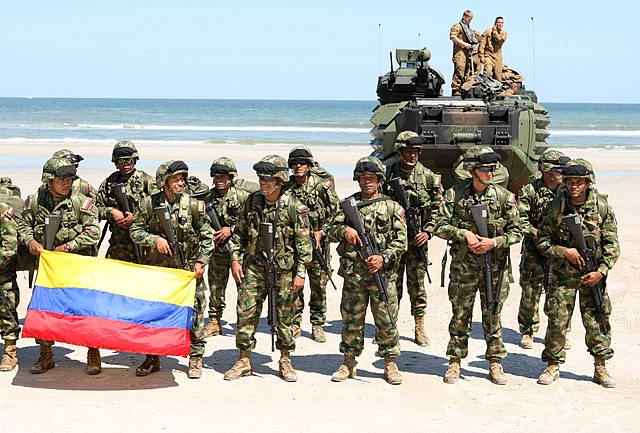
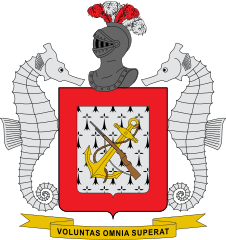 The Colombian Naval Infantry or Colombian Marines (Infantería de Marina Colombiana) are the infantry branch of the Colombian National Armada, 53,123 strong, and organized into a single division with four brigades: One amphibious assault brigade, three riverine brigades subdivided into battalions and many small security units.
The Colombian Naval Infantry or Colombian Marines (Infantería de Marina Colombiana) are the infantry branch of the Colombian National Armada, 53,123 strong, and organized into a single division with four brigades: One amphibious assault brigade, three riverine brigades subdivided into battalions and many small security units.
As for equipment, they used a mix of Russian 8 BTR-80 Caribe, 8 British Griffon 2000TD hovercraft, operated 42 USA Navistar 7000MV trucks, Chevrolet NPR and Chevrolet Kodiak.
The main training base or “BEIM” is located in Coveñas (Sucre Dept.) north caribbean coast. 3 battalions for recruits boot camp training, 13-week training program under supervision of a USN Mission by a Gunnery Sergeant of USMC, and a Specialists Center (CIEAN) for sub-officers special training courses also supervised by the same Gunnery Sergeant.
The Batallón de Comando y Apoyo is tasked of Marines bases security.
Nomenclature of ships
 Swedish modified HALLAND class destroyers
Swedish modified HALLAND class destroyers
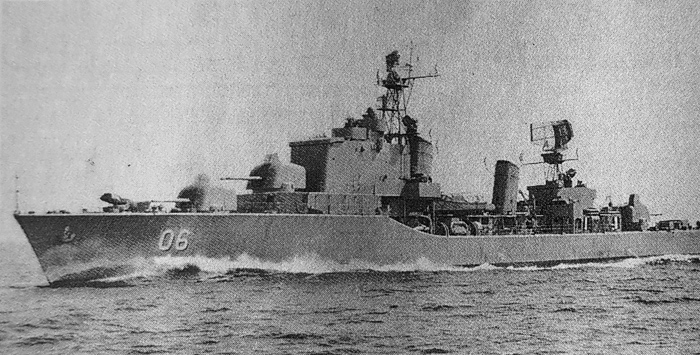
Class: D06 SIETTE DE AGOSTO (Gotaverken Nov 1955, 19.6.56 comp. 31.10.58, ex-Trece de Funto), D05 VEINTE DE JULIO (Kockums, Oct 1955 26.6.56 15.6.58).
Ordered in 1954 these modified Swedish Halland class destroyers mounted a different armament, more electronics, different interior arrangement, and were built on purpose at Gotawerken and cockums from 1955 to 1958. July 1957 saw 3 de Junio renamed 20 de Agosto, and both were refitted in the US in 1975-76, included a machinery overhaul, 25 kts top speed, new Dutch electronics, M4 radar director.

Conway’s profile. Dedicated article in 2026
Specs:
Displacement: 2650t standard: 3300t full load
Dimensions: 397ft 2in pp x 40ft 7in x 15ft 4in max 121.1 m x 12.4 m x 4.7m
Machinery: 2-shaft De Laval double reduction geared turbines, 2 Penhoét boilers 55,000shp = Range 450nm/3000nm at 32kts/18kts, 2,000shp = 32kts
Armament: 2×3 120mm Bofors, 4x 40mm Bofors AA, 1×4 533mm T, 1x 375mm Bofors ASW RL
Sensors: Radar LW-03, DA-02
Complement: 248
 Destroyer Antioquia (1960)
Destroyer Antioquia (1960)
Ex-US FLETCHER class destroyer, D001 ANTIOQUIA (ex-Hale) built at Bath Iron Wks, acquired Dec 1960, Discarded 20.12.73
 Caldas class destroyers (1972)
Caldas class destroyers (1972)
Ex-US ALLEN M SUMNER class destroyers:
Class: CALDAS D002 (ex-Willard Keith) built at Bethlehem, San Pedro, acquired 1.7.72 (Discarded 1977) and SANTANDER D003 (exWaldron) from Federal, Kearny acquired 30.10.73, Discarded 1986.
They received the FFRAM II modernization prior to transfer and were very capable ships.
 Padilla class F1500 Frigates (1982)
Padilla class F1500 Frigates (1982)
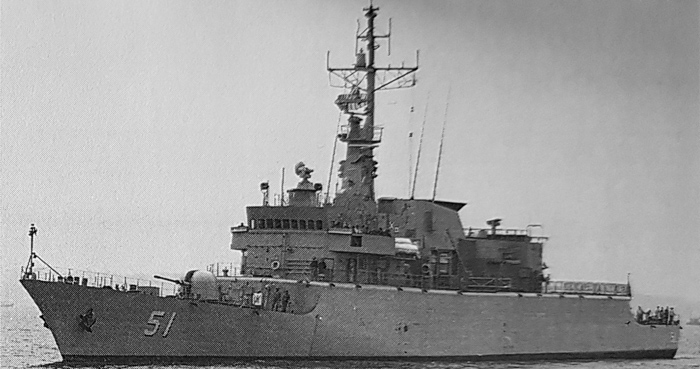
West German FS 1500 type frigates built at Howaldtswerke, Kiel 1981-84, pennants F51-54 Almirante Padilla, CALDAS, ANTIOQUIA, INDEPENDIENTE. Extant today.
Ordered 1980 on a modified F1500 design with stabilizers, hangar, landing pad for a MBB BO-105 ASW/SAR helicopter, combat data system TAVITAC, CSF Thomson fire control Vega II, Canopus optronic directors, CSEE Dagaie chaff launchers, with SAM planned for installation.

Specs:
Displacement: 1500t standard, 2100t full load
Dimensions: 295ft 3in x 37ft x 11ft 1in (93.5m x 11.3m x 3.7m)
Machinery: 2 shafts, 4 MTU 20V TB92 diesel 23,400 hp, 27 kts, RA 7000 nm/14 kts
Armament: 8 MM40 Exocet, 1x 76mm OTO Melara Compact, 2x 40mm Breda, 2×3 324mm Asw TT, 1 helicopter
Sensors: Thomson-CSF Sea Tiger, Castor IIB, sonar Krupp Atlas ASO 4-2
Complement: 90
 Brion class Destroyer Escorts (1965)
Brion class Destroyer Escorts (1965)
Ex-Crossley/Buckley class DEs, Almirante Brion, Padila, Tono, Cordoba, acquired 1965-69, discarded 1973-80. Cordoba was modernized along FRAM II before transfer in 1969 and became a museum ship.
Pennants DT 07 to 04 and DY 15 (Cordoba). Specs as the original DDEs.
 Bocaya class DEs (1972)
Bocaya class DEs (1972)
Ex-US DEALEY class destroyer escort D07 BOYACA (ex-Hartley) built in New York SB, transferred 8.7.72, scrapped since.
 Almirante Brion class Frigates (1953)
Almirante Brion class Frigates (1953)
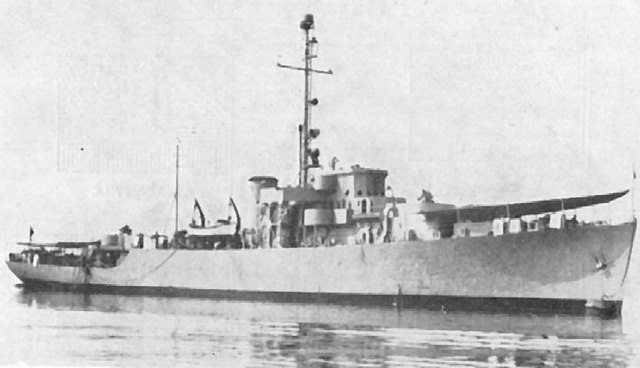
Ex-US TACOMA class patrol frigates: FG 14 ALMIRANTE BRION Consolidated Steel, 1953 Discarded 1968 (ex-Burlington) San Pedro, FG 11 ALMIRANTE PADILLA Walter Butler, Mar 1947 Discarded 1965 (ex-Groton) Superior, FG 12 CAPTAIN TONO Consolidated Steel, Feb 1952 Discarded 1962 (ex-Bisbee) San Pedro. All veterans of the Korean war. Specs as the originals.
 Pijao class submarines (1974)
Pijao class submarines (1974)
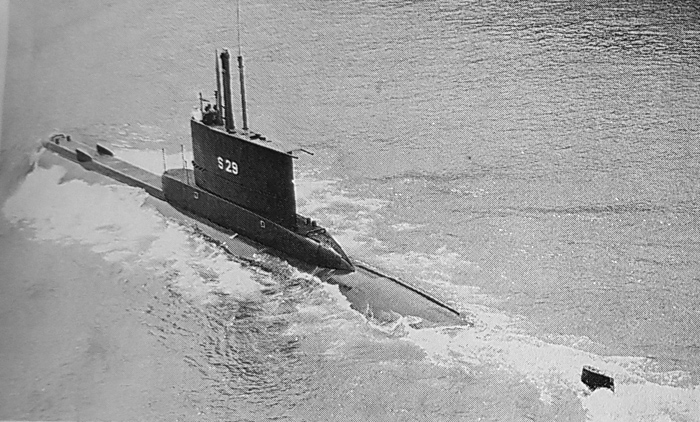
West German Type 209/1200 submarines built at Howaldtswerke in Kiel, SS 28 and SS 29, ordered in 1971 as modified versions of the Greek Glavkos class:
SS 28 PIJAO Howaldtswerke, Kiel 1.4.72 10.4.74 17.4.75 Extant 1995
SS 29 TAYRONA Howaldtswerke, Kiel 1.5.72 16.7.74 18.7.75 Extant 1995
 Intrepido class midget submarines (1972)
Intrepido class midget submarines (1972)
Italian Type SX 506 midget submarines, similar to those ordered by Pakistan and Taiwan to Cosmos, Livorno yard. They can carry two underwater vehicles with eight frogmen and up to 2t explosives for spec ops.
Four boats:
SS 20 INTREPIDO Cosmos, Livorno 1972 Extant 1995 SS 21 INDOMABLE Cosmos, Livorno 1972 Extant 1995 SS 23 RONCADOR Cosmos, Livorno 1974, Stricken c1981 SS 24 QUITO SUENO Cosmos, Livorno 1974
Specs:
Displacement: 581/70t
Dimensions: 75ft Sin x 6ft 7in x 13ft 3in (23.0m x 2.0m x 4.0m)
Machinery: Diesel electric, 300bhp = 8kts/6kts.
Range 1200nm at 7kts
Complement: 5
 MORROSQUILLO class landing craft
MORROSQUILLO class landing craft
Class: Morrosquillo (TM 246), Uraba (TM 247), Bahia Honda (TM 248), Bahia Portete (TM 249), Bahia Solano (YM 250), Bata Cupica (VM 251), Bahia Urria (TM 252), Bahia Malaga (1M 253)
Eight LCU 1466A landing craft built for the US Amy in 1954 and transferred 1991 92 (347t full load, 3 diesels = 7kts, 2 12.7 mm MG), Used as transports. All extant 1995.
SMALL SURFACE COMBATANTS
 Ex-US CHEROKEE class patrol vessels
Ex-US CHEROKEE class patrol vessels
Class: Pedro de Heredia (RM 72, ex-Choctatu, 1961), Sebastian de Belalcazar (RM 73, ex-Carib, 15,3.79), Rodrigo de Bastedas (RM 74, ex-Hidatsa, 15.3.79), Bahia Solano (RM 75, ex-Ficanila, 15.3.79).
Pedro de Heredia was purchased outright in 1978. Ex-US tugs used for patrol and rescue duties, armed only with 1~3in gun. Bahia Solano deleted 1987, remainder extant 1995,
 Quita Suevo class OPVs
Quita Suevo class OPVs
Ex-US ASHEVILLE class patrol gunboats: Quita Suevo (111, ex-Tacoma) and Albuquerque (112, ex-Welch) reported leased to Colombia in 1981. Transferred to Customs Service 1992.
 ARAUCA class river gunboats
ARAUCA class river gunboats

Arauca 1957
Class: Arauca, Leticia and Rio Hacha, built by Union Industrial de Barranquilla; launched 1955; completed 1956; extant 1995. Lencia converted to a hospital boat in the early 1970s and armament removed. Extant 1995.
Specs:
Displacement: 184t
Dimensions: 63ft x 3in x 23ft 6in x 2ft 9in max (49.8m x 7.2m x 0.8m)
Machinery: 2 shafts, 2 Caterpillar diesels, 916 bhp = 13 kts
Armament: 2 76mm (1×2), 4-20mm (4×1)
Complement: 43
 OTHER PATROL CRAFT
OTHER PATROL CRAFT
Colombia also operated two coastal patrol craft (Espartana, 50t, commissioned 1950, stricken 1993) and Capitan R D Binney (23t, commissioned 1947, extant 1995) both built by Ast Naval, Cartagena and six river patrol craft.
 COAST GUARD
COAST GUARD
Colombia also has a coast guard and a separate customs service:
–Six river patrol craft Juan Lucio, Alfonso Vargas, Fritz Hagale, Humberto Cones, Calibio, Carlos Galindo (LR 122-124, 126-128) delivered in 1952 54 (33t full load, 23.2m, 280bhp = 13kts, 2 20mm). Extant 1995.
–Three patrol craft Pedro Gual, Esteban Jaramillo, Carlos E. Restrepo, delivered 1964 by Schurenstedt KG (85t, 32,9m, 2450bhp = 26kts, 1-20mm). First two deleted in 1984 and third in 1986.
-Three Finnish Rutssalo class, Carlos Alban, Forge Soto del Corval, Nito Restrepo delivered in 1971 (130t full load, 33m, 2500bhp = 17kts, 2 20mm). Second deleted in 1984 and third in 1990.
-Two Swift 105ft class Rafael del Castillo y Rada (GC 102), Olaya Herrera (AN 201) delivered 1983 (103t full load, 31.5m, 5320bhp = 25kts, 140mm Bofors, 2 12.7mm), Olaya Herrera was badly damaged in 1986. Extant 1995.
-Two Swift 110ft class Jose Maria Palas (GC 103), Medardo Monzon (GC 104) commissioned 1989-90 (951 full load, 33.5m, 2 diesels, 25kts, 140mm, 1 12.7mm, 2 MG). Extanr 1995.
-Two US Mk II PBs Jaimie Gomez (GC 105) and Neponniceno Pena (GC 106) delivered in 1990 (341 full load, O90bhp = 28kts, 1-40mm, 1 20mm), original guns replaced by 2 12.7mm, 2 MG and 1 Mk 19 grenade launcher.
-Two large patrol craft Juan Nepomuceno stava (113) and Jose Afaria Garcia de Toledo (114) built by Bender Marine in 1994, Extant 1995,
-Nine Tenerife class river patrol craft built by Bender Murine (12.4m, 3 diesels, 850bhp = 29kts, 3 12.7mm MG, 2 7.62mm MG, 1 grenade launcher). Acquired 1993, all extant 1995,
-Two Octubre class river patrol craft built by Swiftehips (18f1 full load, 13.7m, 2 diesels = 32kts, 2 12.7mm MG, 2 7.62mm MG). Acquired 1992, both extant 1995.
-Five Rio class river patrol craft (ex-US PBR Mk II) built 1970 and acquired 1989 (9.8m, 2 diesels = 24kts, 2-12.7mm MG, 1 7.62mm MG, 1-60mm mortar). All extant 1995.
-Two ‘Rotork’ type 12.7m
-Twelve Delfin class patrol craft 7.9m
Modern Colombian ship
 Alm. Padilla class (2026)
Alm. Padilla class (2026)
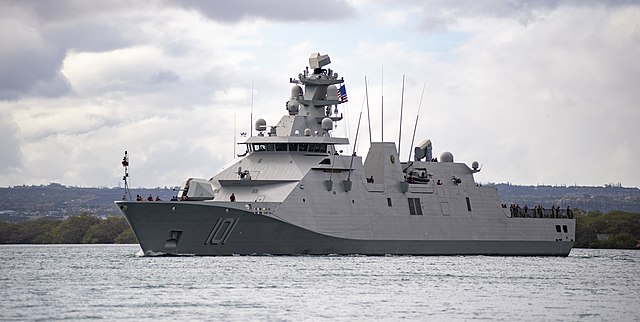
SIGMA PES 10714CO, a variant of the Dutch design ordered at Cotecmar based on Damen design, to replace the 1980s Almirante Padilla class; Five ships in all, commissioned expected from 2026 to 2032.
Specs: 107.5 x 14.02 x 3.93m, 2808 tons, 2x 10,000 kw GTs, 26/14 kts 8200 nmi, SAAB sea giraffe 4A radar, crew 125, 1 helicopter, armament in development.
 PZE 8 de Julio (2012)
PZE 8 de Julio (2012)
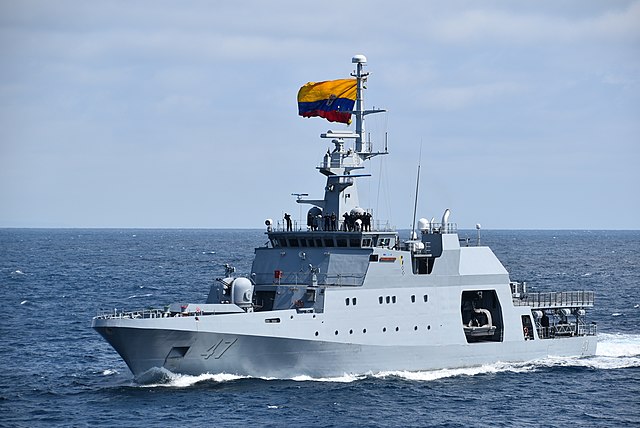
Three OPV-80-class offshore patrol vessel, ARC 20 de Julio, 7 de Agosto (2013) and Santander (2016). Ordered in 2009, built at COTECMAR shipyard in Cartagena. Small frigate sized OPVs but very lightly armed. Their helicopter is a main asset.
Specs:
1,728–1,850 tons 80.6 x 13 m, 2× Wärtsilä 12V26 GT 2x 4,080 kW (5,470 hp), 3× Caterpillar 3412C 435 kVA, 1× Caterpillar 3056, 2× type MD stern shaft seals, 2× bow thrusters, 22 knots, RA 8,600 nmi, crew 30-60. Sensors: Fire Control System DESA ARIES, Sperry Marine VisionMaster FT Integrated Bridge System, Sperry Marine BridgeMaster E X-band radars, Sperry Marine BridgeMaster E S-band radar.
Armed with 40 mm/70, 2× 12.7 mm, Bo 105 helicopter, helipad and hangar.
 Intrépido class submarines (2015)
Intrépido class submarines (2015)
Modified Type 206 for Colombia, Intrépido, Indomable. Former German S172 U23 and S173 U24, refurbished after decom. in 2010. They had been built in the 1970s…
 Filigonio Hichamon class RMs (1998)
Filigonio Hichamon class RMs (1998)
Filigonio Hichamon; Manuel Antonio Moyar, Igaraparaná, SSIM. Julio Correa Hernández, Manacacias, Cotuhe, Ariari. Locally-built The NF (Nodriza Fluvial) motherships for armored patrol, support & re-provisioning of smaller piranha-class boats deployed from and around them. Mix of older gunboats or armored tugs reconditioned in modern standards, to be replaced by the purpose-built PAF-series boats.
 PAF riverine boats
PAF riverine boats
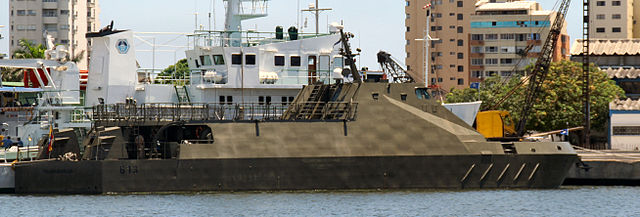
PAF-I class: Senen Alberto Araújo, Guillermo Londoño Vargas, Mario Alonso Villegasa
PAF-III class: Tony Pastrana Contreras, CTCMI Jorge Moreno Salazar (2005)
PAF-IV class: Juan Ricardo Oyola Vera, Freddy Alexander Pérez Rodríguez, Edic Cristian Reyes Holguín (2009)
Specs PAF IV:
373 tons, 40.3 x 9.5 x 1.26 m, 2× 450 bhp diesels, 2× Schottel SPJ82RD, 9 knots, 2,900 nmi crew 33+ 39 marines, 4× M60 LMG, one turreted LAG 40 40mm grenade launcher, armor NIJ level III, Helipad
Other Riverine vessels:
-9x 40ft Fast Riverine patrol, Tenerife class, US built 1993
-11x 32 ft. Patrol Boat River (PBR) Mk.II 1989-93
-2016 ARC Río Sinú
-c30x 22 ft. Patrol Boat, Boston Whaler 1993 type
-c30x 22 ft. Patrol Boat, Boston Whaler 1991 type
Read More/Src
Books
Links
www.navypedia.org/ships/colombia/col_index.htm
https://www.cotecmar.com/
https://web.archive.org/web/20151208151355/http://www.cotecmar.com/construcciones-detalle/law_enforcement-2.html
https://web.archive.org/web/20150924010616/http://www.fassmer.de/fileadmin/user_upload/Downloads/Shipbuilding/salesblaetter/SB_43B_OVP_80_Offshore_Patrol_Vessel_Web.pdf
en.wikipedia.org/wiki/List_of_decommissioned_ships_of_the_Colombian_Navy
https://en.wikipedia.org/wiki/List_of_active_ships_of_the_Colombian_Navy
https://en.wikipedia.org/wiki/Colombian_Navy
https://aminoapps.com/c/tanques-de-guerra/page/item/btr-80-caribe/2Q2W_NNuwIM8gBmWRgpg4ok2eKQVeEbVnY
https://web.archive.org/web/20110928130237/http://www.armada.mil.co/?idcategoria=540049

 Latest Facebook Entry -
Latest Facebook Entry -  X(Tweeter) Naval Encyclopedia's deck archive
X(Tweeter) Naval Encyclopedia's deck archive Instagram (@navalencyc)
Instagram (@navalencyc)





 French Navy
French Navy Royal Navy
Royal Navy Russian Navy
Russian Navy Armada Espanola
Armada Espanola Austrian Navy
Austrian Navy K.u.K. Kriegsmarine
K.u.K. Kriegsmarine Dansk Marine
Dansk Marine Nautiko Hellenon
Nautiko Hellenon Koninklije Marine 1870
Koninklije Marine 1870 Marinha do Brasil
Marinha do Brasil Osmanlı Donanması
Osmanlı Donanması Marina Do Peru
Marina Do Peru Marinha do Portugal
Marinha do Portugal Regia Marina 1870
Regia Marina 1870 Nihhon Kaigun 1870
Nihhon Kaigun 1870 Preußische Marine 1870
Preußische Marine 1870 Russkiy Flot 1870
Russkiy Flot 1870 Svenska marinen
Svenska marinen Søværnet
Søværnet Union Navy
Union Navy Confederate Navy
Confederate Navy Armada de Argentina
Armada de Argentina Imperial Chinese Navy
Imperial Chinese Navy Marinha do Portugal
Marinha do Portugal Mexico
Mexico Kaiserliche Marine
Kaiserliche Marine 1898 US Navy
1898 US Navy Sovietskiy Flot
Sovietskiy Flot Royal Canadian Navy
Royal Canadian Navy Royal Australian Navy
Royal Australian Navy RNZN Fleet
RNZN Fleet Chinese Navy 1937
Chinese Navy 1937 Kriegsmarine
Kriegsmarine Chilean Navy
Chilean Navy Danish Navy
Danish Navy Finnish Navy
Finnish Navy Hellenic Navy
Hellenic Navy Polish Navy
Polish Navy Romanian Navy
Romanian Navy Turkish Navy
Turkish Navy Royal Yugoslav Navy
Royal Yugoslav Navy Royal Thai Navy
Royal Thai Navy Minor Navies
Minor Navies Albania
Albania Austria
Austria Belgium
Belgium Columbia
Columbia Costa Rica
Costa Rica Cuba
Cuba Czechoslovakia
Czechoslovakia Dominican Republic
Dominican Republic Haiti
Haiti Hungary
Hungary Honduras
Honduras Estonia
Estonia Iceland
Iceland Eire
Eire Equador
Equador Iran
Iran Iraq
Iraq Latvia
Latvia Liberia
Liberia Lithuania
Lithuania Mandchukuo
Mandchukuo Morocco
Morocco Nicaragua
Nicaragua Persia
Persia San Salvador
San Salvador Sarawak
Sarawak Uruguay
Uruguay Venezuela
Venezuela Zanzibar
Zanzibar Warsaw Pact Navies
Warsaw Pact Navies Bulgaria
Bulgaria Hungary
Hungary

 Bundesmarine
Bundesmarine Dutch Navy
Dutch Navy Hellenic Navy
Hellenic Navy Marina Militare
Marina Militare Yugoslav Navy
Yugoslav Navy Chinese Navy
Chinese Navy Indian Navy
Indian Navy Indonesian Navy
Indonesian Navy JMSDF
JMSDF North Korean Navy
North Korean Navy Pakistani Navy
Pakistani Navy Philippines Navy
Philippines Navy ROKN
ROKN Rep. of Singapore Navy
Rep. of Singapore Navy Taiwanese Navy
Taiwanese Navy IDF Navy
IDF Navy Saudi Navy
Saudi Navy Royal New Zealand Navy
Royal New Zealand Navy Egyptian Navy
Egyptian Navy South African Navy
South African Navy






























 Ukrainian Navy
Ukrainian Navy dbodesign
dbodesign